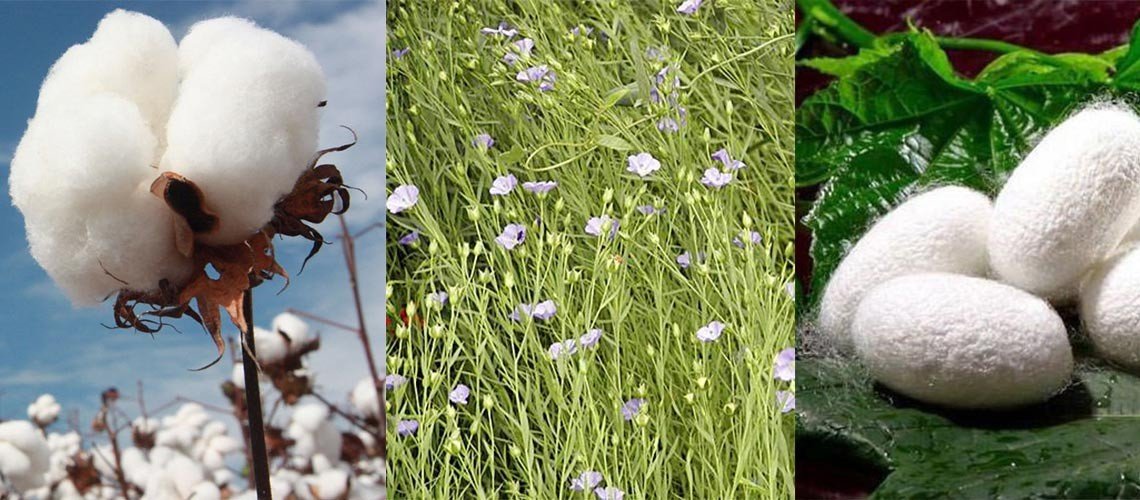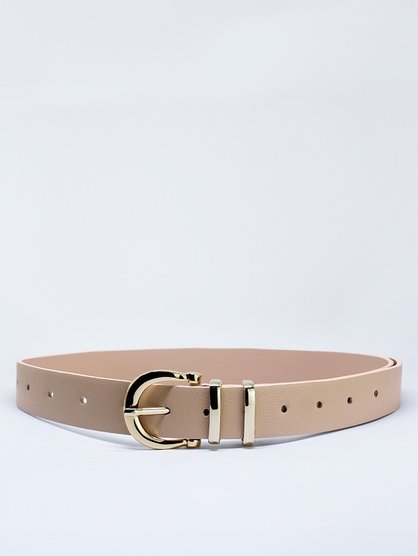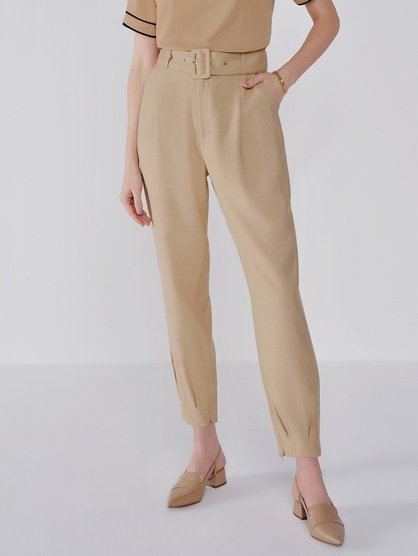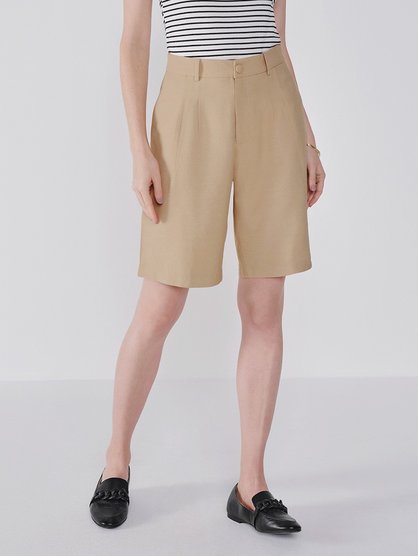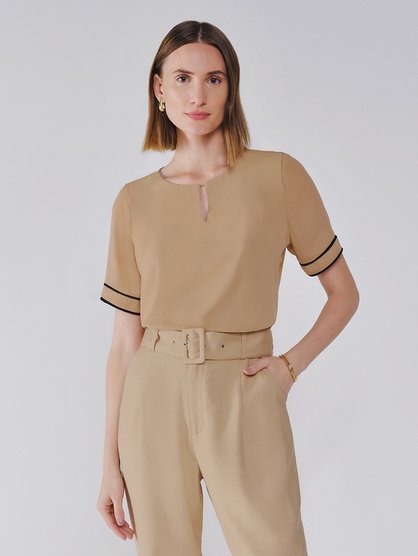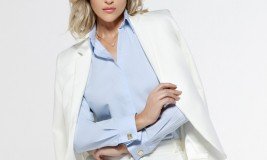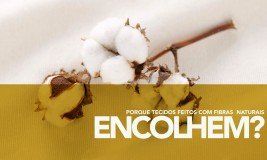As fibras têxteis naturais são produzidas pela natureza e podem ser de origem animal, vegetal ou mineral. As principais fibras naturais são: Algodão (CO), Linho (CL), Seda (S)
NATURAL FIBERS FABRICS
Natural textile fibers are the fibers produced by nature. These fibers can be of animal, vegetable or mineral origin.
TECIDO DE ALGODÃO
O Algodão é uma fibra natural de origem vegetal. Embora o mercado esteja sempre oferecendo novas tecnologias em termos de tecido, o algodão continua sendo a fibra têxtil mais utilizada no mundo por suas qualidades naturais relacionadas ao conforto, maciez e durabilidade. Quando seca, a fibra de algodão é quase inteiramente composta de celulose (de 88 a 96%), além de pequenas porções de proteínas, pectinas, ceras, cinzas e ácidos orgânicos. O algodão pode ser classificado de acordo com o comprimento e a espessura de suas fibras, maturidade, alongamento, cor, entre outras características. Hoje, o algodão egípcio é considerado o de melhor qualidade no mundo. Sua característica é ter fibras longas e extra longas, macias e resistentes. Sua qualidade faz com que peças compostas por esta matéria prima tenham seus preços triplicados. O algodão egípcio é cultivado apenas no Egito. Outros produtores de algodão de fibra longa e extralonga são os Estados Unidos e o Peru, que cultivam o algodão pima.
COTTON FABRIC
Cotton is a natural fiber of vegetable origin. Although the market is always offering new technology in terms of fabric, cotton remains the most used textile fiber in the world for its natural qualities related to comfort, softness and durability. When it dries, the cotton fiber is almost entirely made up of cellulose (88-96%), as well as small portions of proteins, pectins, waxes, ashes and organic acids. Cotton can be classified according to the length and thickness of its fibers, maturity, elongation, color, among other characteristics. Today, Egyptian cotton is considered the best quality in the world. Its characteristic is to have fibers long and extra long, soft and resistant. Its quality makes parts composed of this raw material have their prices tripled. Egyptian cotton is grown only in Egypt. Other producers of long-fiber and extra-long cotton are the United States and Peru, who grow pima cotton.

TECIDO DE LINHO
O linho é uma fibra de caule, em sua maior parte formada por celulose. Em seu estado natural, há cerca de 85% de celulose, sendo que água, gordura, cera, cinzas e material intracelular compõe o restante da fibra. O cultivo da fibra de linho é um dos mais antigos. Segundo registros históricos, a fibra de linho foi descoberta há aproximadamente 8000 anos a.C. Há ainda registros de tecidos de linho puro usado como tecido nobre e símbolo de poder e riqueza no antigo Egito, para se ter uma ideia, os faraós eram embalsamados (mumificados) com esse tecido como sinal de luz e pureza. O linho é uma planta de cultivo, ou seja, precisa de sol e chuva em certos períodos e também de uma boa preparação do solo para a obtenção de fibras de boa qualidade. Após ser colhido, o caule do linho é sujeito a um processo de maceração. A ação das bactérias descompõe a pectina junto às fibras liberianas e a parte lenhosa. As filaças resultantes são secas ao sol, geralmente no próprio campo e então tratadas mecanicamente para separar as fibras das partes vegetais não fibrosas. O linho possui características únicas que o diferenciam dos demais tecidos, como por exemplo, a durabilidade e ainda o fato de ele ser antialérgico e antibacteriano. Atualmente o maior cultivo de linho concentra-se na Europa e o país que mais se destaca em termos de qualidade do linho é a Bélgica.
LINEN FABRIC
Linen is a stem fiber, mostly made up of cellulose. In its natural state, there is about 85% of cellulose, and water, fat, wax, ashes and intracellular material make up the rest of the fiber. The cultivation of linen fiber is one of the oldest. According to historical records, linen fiber was discovered approximately 8000 years BC There are still records of pure linen fabrics used as a noble fabric and symbol of power and wealth in ancient Egypt, to give you an idea, the pharaohs were embalmed (mummified) with this tissue as a sign of light and purity. Linen is a plant of cultivation, that is, it needs sun and rain in certain periods and also of a good preparation of the ground to obtain fibers of good quality. After being harvested, the stem of the linen is subject to a maceration process. The action of the bacteria decomposes the pectin next to the fibers liberians and the woody part. The resulting rows are sun dried, generally in the field itself and then mechanically treated to separate the fibers from the non-fibrous plant parts. Linen has unique characteristics that differentiate it from other fabrics, such as durability and the fact that it is anti-allergic and antibacterial. Currently the largest linen cultivation is concentrated in Europe and the country that stands out most in terms of linen quality is Belgium.

TECIDO DE SEDA
A fibra de Seda é uma fibra natural de origem animal obtida através da secreção do bicho da seda. É a fibra natural mais nobre e também a mais cara. Seu apreço é devido ao brilho, ao toque e à reduzida tendência de amarrotar. Os fios de seda são os mais nobres dos fios, com padrões de qualidade incomparáveis no que diz respeito à elasticidade, solidez, finura, leveza e flexibilidade. A seda é uma fibra que não apodrece, e tem alto poder de absorção de umidade podendo absorver até 30% do seu peso sem que o tecido ou o fio pareça úmido.
SILK FABRIC
Silk fiber is a natural fiber of animal origin obtained through the secretion of the silkworm. It is the most noble natural fiber and also the most expensive. His appreciation is due to the brilliance, the touch and the reduced tendency to crumple. Silk threads are the noblest of threads, with unmatched quality standards for elasticity, strength, finesse, lightness and flexibility. Silk is a non-rotting fiber and has a high moisture absorption power and can absorb up to 30% of its weight without the fabric or yarn looking moist.

COMO SURGIU A TECELAGEM
A tecelagem é considerada uma das artes mais antigas do mundo e surgiu entre os homens como forma de proteção. O homem, nos abrigos que a natureza lhe oferecia, encontrava na trama de galhos e folhas uma forma de se resguardar. Ele também se valeu desse tipo de trabalho para proteger o corpo. Os primeiros tecidos nasceram da manipulação das fibras com os dedos, assim, o homem deu início à arte da cestaria, e de sua evolução nasceram os primeiros tecidos. Descobrindo novos modos de entrelaçar, novos desenhos foram tecidos e outras texturas foram descobertas. No Brasil, o primeiro registro oficial de uma empresa têxtil aconteceu no ano de 1844, quando foi fundada a fábrica de Todos os Santos na Bahia.
HOW DID THE WEAVING ARISE
Weaving is considered one of the oldest arts in the world and has emerged among men as a form of protection. The man, in the shelters that nature offered him, found in the web of branches and leaves a way of sheltering. He also used this kind of work to protect the body. The first tissues were born from the manipulation of the fibers with the fingers, this way, man began the art of basketry, and from its evolution the first tissues were born. Discovering new interlacing modes, new designs were woven and other textures were discovered. In Brazil, the first official registration of a textile company took place in 1844, when the Todos os Santos factory was founded in Bahia.

